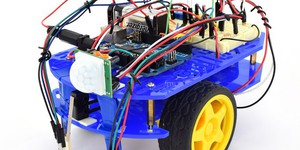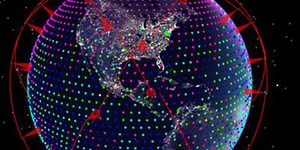Space Exploration Science Projects (55 results)
|
Select a resource
Coding Projects
Sort by
|
Space is a dangerous place for astronauts and spacecraft. Earth's orbit is full of potential hazards like meteoroids, space debris, and other satellites that you do not want to crash into! How do scientists detect these objects in space? If you do detect an object, how can you tell what it is? In this project you will make your own computer program that can recognize and react to three different models of objects that can be found in space. No previous programming experience is required!
Read more
Training for space flight isn't just a physically demanding job. You need to be prepared mentally and emotionally, too! In this science project, you will test how a breathing technique can improve your fight-or-flight response induced by the stressors of space flight.
Read more
The Mars Curiosity and Perseverance rovers use scientific instruments, nicknamed ChemCam (Figure 1) and SuperCam respectively, to help them analyze the composition of rocks and soil on Mars. You can learn more about these cameras from the resources in the Bibliography, and more about why scientists want to analyze rocks on Mars from the video on this page.
Figure 1. The two main parts of the ChemCam instrument on the Mars Curiosity rover.
For a science…
Read more
Light sensors are part of many devices that we use every day. For example, they help your phone know when to automatically brighten or dim the screen based on ambient light levels. They can also be used to help solar panels track the sun, which helps the panels generate more power. Many spacecraft and planetary rovers are solar-powered. In this project you will build and program your own solar-tracking robot. Optionally, you can add solar panels and rechargeable batteries. Can your robot keep…
Read more
Astronauts on Mars missions must be protected from hazardous environments, like steep cliffs, rocky terrain, and extreme temperature variations. How can geofencing help? In this project, you will design a system that uses geofencing technology coupled with biosensors to ensure astronaut safety. The system will create a virtual boundary around astronauts, providing alerts if they approach dangerous areas or leave designated safe zones, or if their vital signs fall below a certain threshold. Can…
Read more
The Science Buddies Bluebot Kit contains parts to build four different robots:
A motion-activated robot that uses a passive infrared (PIR) sensor
A light-tracking robot that uses photoresistors
A line-following robot that uses infrared emitter-detectors
An obstacle-avoiding robot that uses bump sensors
However, in each project, the sensors are hard-wired to control the robot's motors. This allows the robot to steer left and right based on input from two sensors, but it does not allow…
Read more
Scientists have known for hundreds of years that sunspot activity waxes and wanes over a cycle that lasts approximately 11 years. In the 1970's, scientists discovered that the sun periodically blasts electrified gases into space, in huge outbursts called 'coronal mass ejections,' or CMEs. This project asks the question: do CMEs follow the solar sunspot cycle?
Read more
In astronomy, a transit (or astronomical transit) is a phenomenon when a celestial body passes directly between a larger body and the observer. As viewed from a particular vantage point, the transiting body appears to move across the face of the larger body, covering a small portion of it.
The word "transit" refers to cases where the nearer object appears smaller than the more distant object. Cases where the nearer object appears larger and completely hides the more distant object are known as…
Read more
If you are interested in space travel and willing to do some coding, this project is for you! It uses FreeFlyer®—powerful software that allows you to simulate space travel—to explore essential mission questions.
Space travel is complex. Many factors influence the trajectory of a spacecraft. Simulations like the ones generated by FreeFlyer are powerful, as they allow you to analyze each factor in isolation, and then visualize the effects in various ways.
Once you familiarize…
Read more
The first man-made satellite, the Sputnik 1, was launched in 1957. As of late 2020, more than 2,600 man-made satellites orbit Earth, with a little over 70% of them in low Earth orbit. If you would like to delve into how satellites and their sensors are configured, or into how their orbits are planned—and do not shy away from a little programming—this project is for you! With the help of FreeFlyer®—powerful software that allows you to simulate satellite orbit and…
Read more
|














